
We supply titanium forgings, including titanium discs, titanium short bars, titanium shafts, titanium sleeves, titanium rings, titanium round and rectangular blocks.
Our Titanium Forging Rings are high-strength, corrosion-resistant components manufactured using hot forging and open die ring rolling techniques. Made from premium titanium alloy billets, such as Gr2, Gr5 (Ti-6Al-4V), Gr7, Gr9, and Gr23, these forged titanium rings offer superior mechanical performance, excellent weldability, and long service life in demanding environments.
We supply seamless titanium forged rings and rolled titanium forging rings with precise tolerances and clean surface finishes. Titanium forged rings are precision components manufactured from titanium bars or ingots through forging, ring rolling, and machining processes. With superior corrosion resistance, high strength, low density, and excellent toughness, titanium rings are widely used in aerospace, chemical, energy, and medical industries.
|
Size |
Grade |
Standard |
|||
|
Outer Diameter (OD) |
Inner Diameter (ID) |
Section Height (H) |
Section/Wall Thickness(T) |
||
|
200-400 |
100-300 |
35-120 |
40-150 |
GR1, GR2, GR5, GR12 |
ASTM B381, ASTM F67, ASTMF136 |
|
400-700 |
150-500 |
40-160 |
40-250 |
||
|
700-900 |
300-700 |
50-180 |
40-300 |
||
|
900-1500 |
400-900 |
70-250 |
40-400 |
||
|
Precision: Machining based on drawings or international standards |
|||||
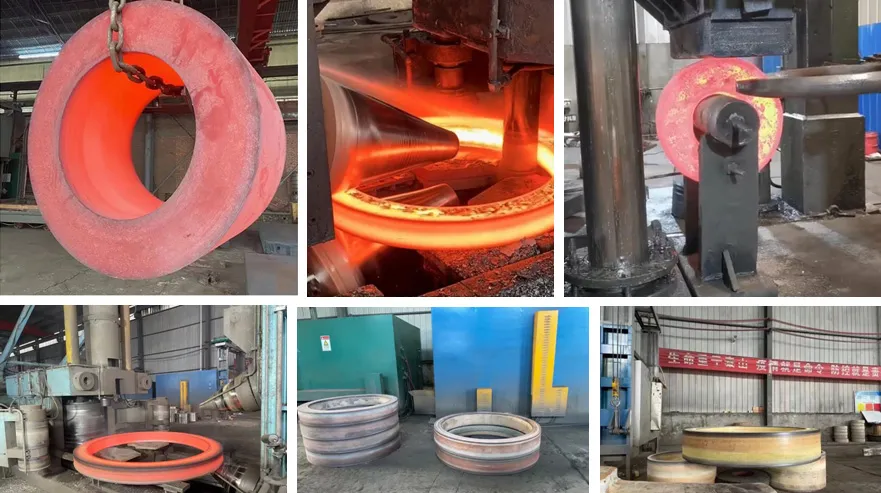
Raw Material Preparation➔(≈ 900–950°C)/Heating of titanium ingots➔
Open-die forging or ring rolling➔Heat treatment (annealing)➔Rough machining➔CNC machining➔Inspection➔Surface pickling or mechanical polishing➔Packing & Shipping
1. Titanium Billet Selection & Inspection
Choose certified titanium alloy ingots (Gr2, Gr5, etc.)➔Verify chemical composition and mechanical properties➔Conduct ultrasonic testing (UT) to detect internal defects
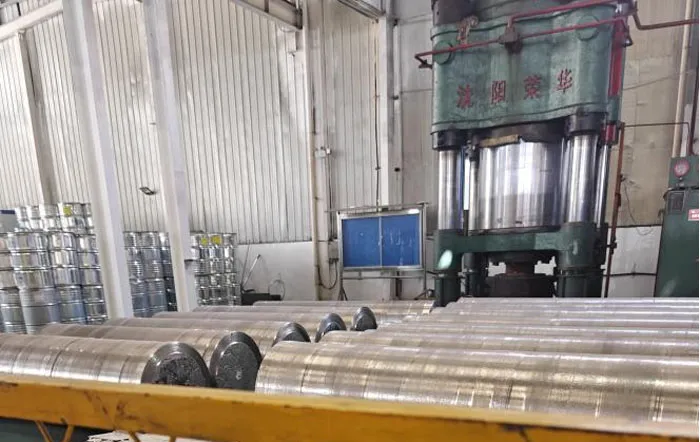
2. Billet Cutting & Pre-Forging
Saw-cut billet into required length
Preform into pancake or disc shape/Forged Blank
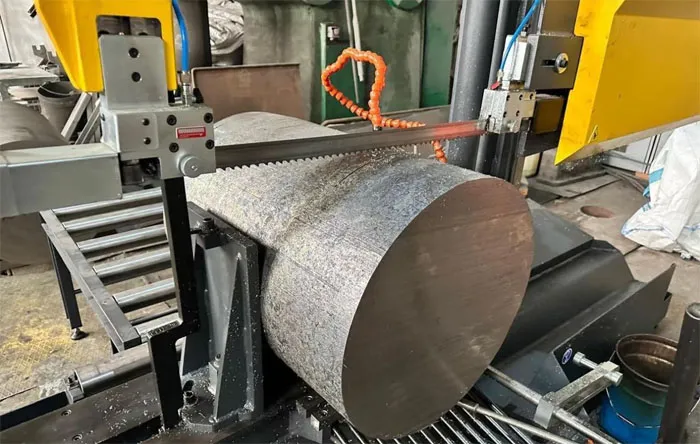
3. Hot Forging Titanium/Titanium Billet Heating
Uniformly heat billets to 850–950°C
Use controlled furnace to preserve titanium integrity
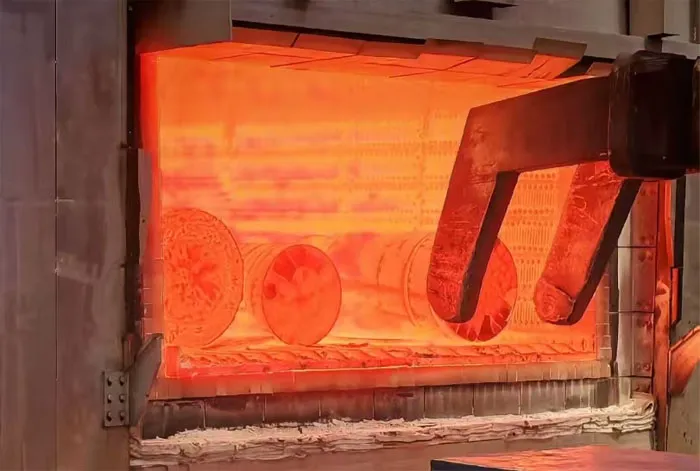
4. Open Die Forging / Punching/Rolling ring/Hollow Ring Forging/Seamless Ring Forging
Punch center hole if required
Upset and spread the material for ring formation
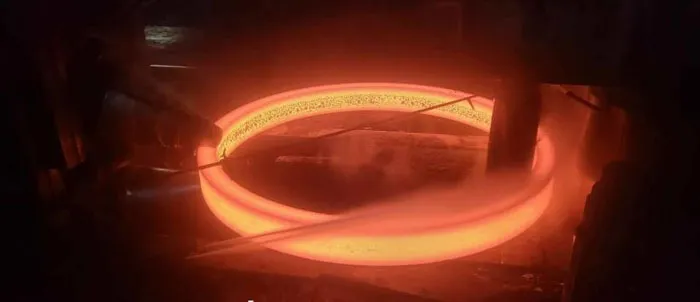
5. Titanium Annealing/Titanium Heat Treatment
Annealing or solution treatment for stress relief
Especially for Gr5 Ti-6Al-4V forged rings

6. Rough / Finish Machining/CNC Machined Titanium Ring/Precision Titanium Forging
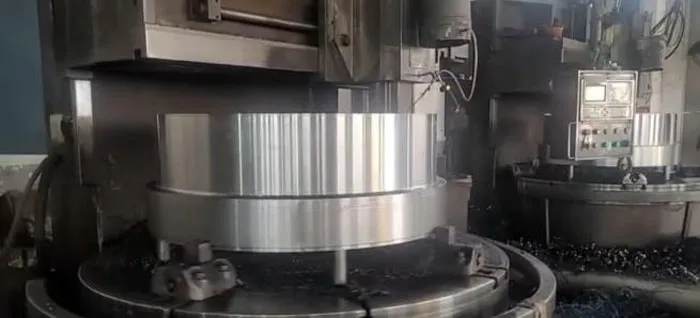
7. Final Inspection & Packaging/ASTM B381 Testing/Forged Ring UT PT/Marked Titanium Forging
PT and UT testing, dimensional checks
Laser marking and anti-rust packing

1.Open Die Forging
Description: The titanium billet is forged between flat dies on a hydraulic press or hammer, and then machined into a ring.
Best For: Small to medium-sized rings with low to moderate precision.
Advantages:
Flexible process, low tooling cost.
Suitable for small-batch production.
Limitations:
Lower dimensional accuracy.
Higher machining allowance required.
Typical Applications: General-purpose flange blanks, sealing rings, equipment parts.
2.Ring Rolling Forging
Description: A pierced billet is expanded into a ring using radial-axial ring rolling machines.
Best For: Medium to large-sized rings with high precision and performance demands.
Advantages:
Excellent material utilization.
Superior grain structure and mechanical properties.
Better control of dimensions and wall thickness.
Limitations:
Higher equipment cost.
Usually requires MOQ (minimum order quantity).
Typical Applications: Aerospace components, chemical flanges, nuclear parts, high-performance rings.
3. Closed Die Forging (Impression Die Forging)
Description: Titanium is forged into a precise shape within a closed die mold.
Best For: Complex-shape precision rings with consistent geometry in large quantities.
Advantages:
High dimensional accuracy.
Excellent repeatability and surface finish.
Limitations:
Expensive and time-consuming die fabrication.
Less flexible for small-batch or custom sizes.
Typical Applications: Aerospace structural rings, military components, high-tolerance forged parts.
Aircraft engine casings and ring components
Landing gear system parts
Offshore oil and gas platform components
Nuclear, hydrogen, and wind energy equipment parts
Medical implants and surgical devices
High-end chemical sealing structures